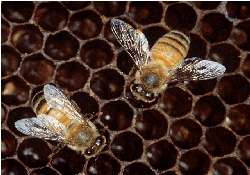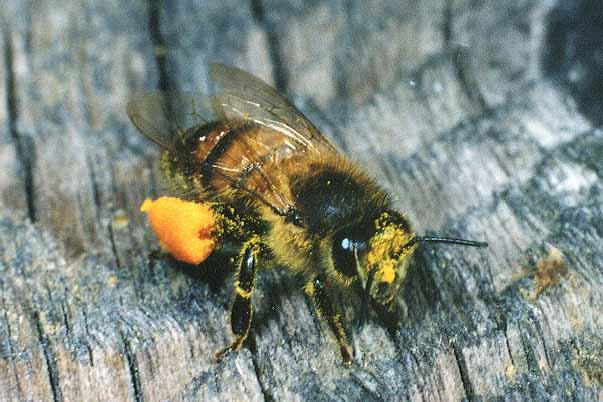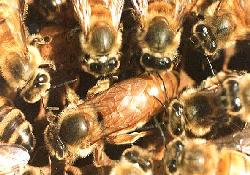Rickert's Bee Preservation Site
| This page is devoted to the protection and preservation of the wild, and honey, bees of Minnesota. |  |
Dangers of the Varroa Mite
The varroa mite, or varroa jacobsoni, is a dangerous parasite that can destroy bee
colonies in just a few years. It drains the bee's life-blood, deforms its body and leaves
it prey to diseases such as acute paralysis virus. Many thousands of hives have already
been lost throughout the world.
The destruction of many wild colonies has wide and serious implications for the future of
seed crops, fruit orchards and any produce that relies on the honeybee for pollination.
While there is no known way to prevent varroa mites from infesting a bee hive, the mites
can be controlled. Controlling the spread of varroa is an environmental issue of worldwide
concern.
Small Hive Beetle (Aethina tumida)
Varroa Mites (Varroa jacobsoni) - External parasite, infestation is usually fatal to colonies, visible to the naked eye, reddish brown with a characteristic oval shape and has eight legs tucked under a shell.
Tracheal Mites (Acarapis woodi) - Internal parasite which lives in the breathing tubes.
Bee Louse (Braula coeca) - Six legs that extend from the body.


 Wildflower
Seed For Sale
Wildflower
Seed For Sale